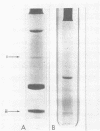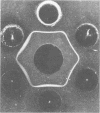Abstract
Experiments were carried out to determine whether immunization of female rabbits with highly purified staphylococcal alpha- or beta-toxins would protect them against intramammary challenge with staphylococci. High circulating anti-alpha-toxin titers reduced the lethal hemorrhagic edematous form of the disease ("blue-breast") produced by strains BB and Compton 201 to a localized chronic abscess form. No such protection was afforded by high anti-beta-toxin titers. Immunization with alpha- or beta-toxins produced no change in the clinical picture of the disease produced by CN.6708, a strain of Staphylococcus responsible for a natural outbreak of abscess-type rabbit mastitis. From these experiments it would appear that alpha-toxin is a key antigen in the blue-breast form of rabbit mastitis. Since the abscess form of the disease was not prevented by immunization with either alpha- or beta-toxin, other virulence factors must be acting to produce this more localized disease.
Full text
PDF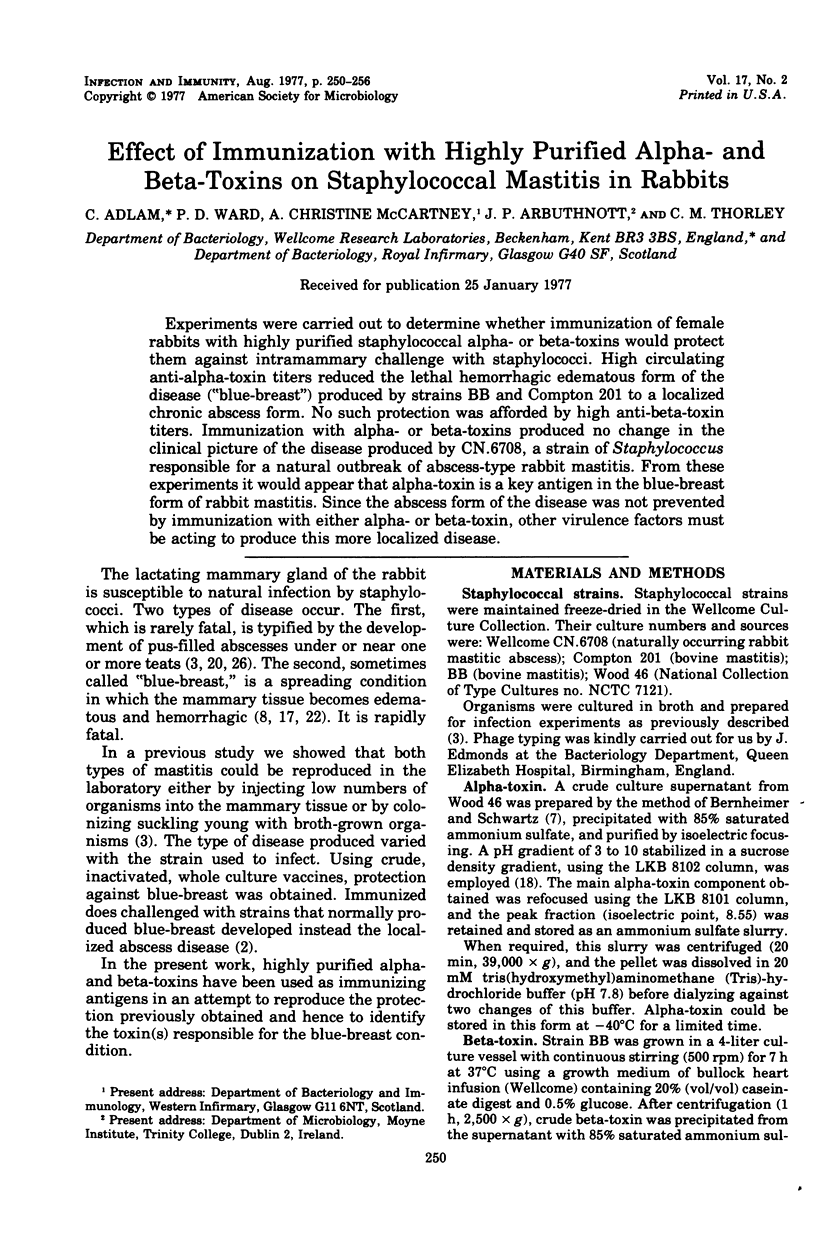
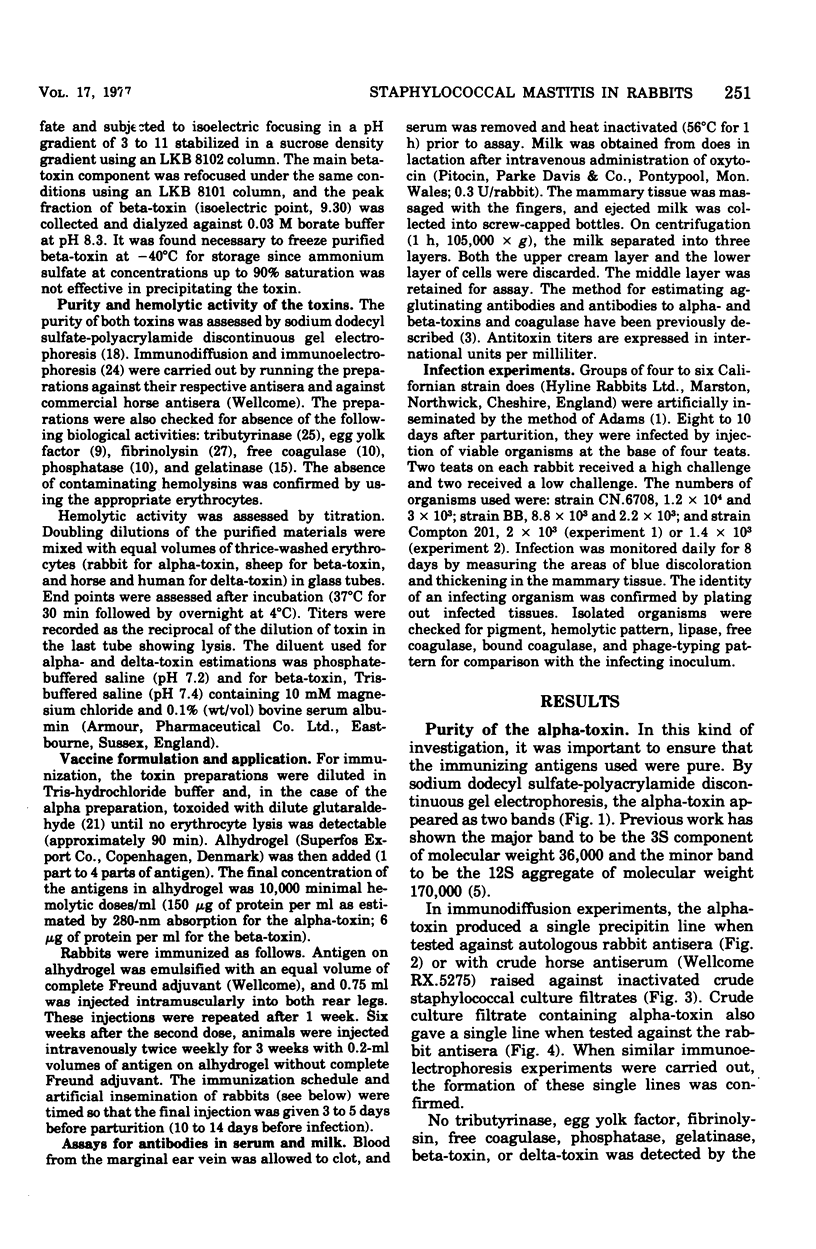
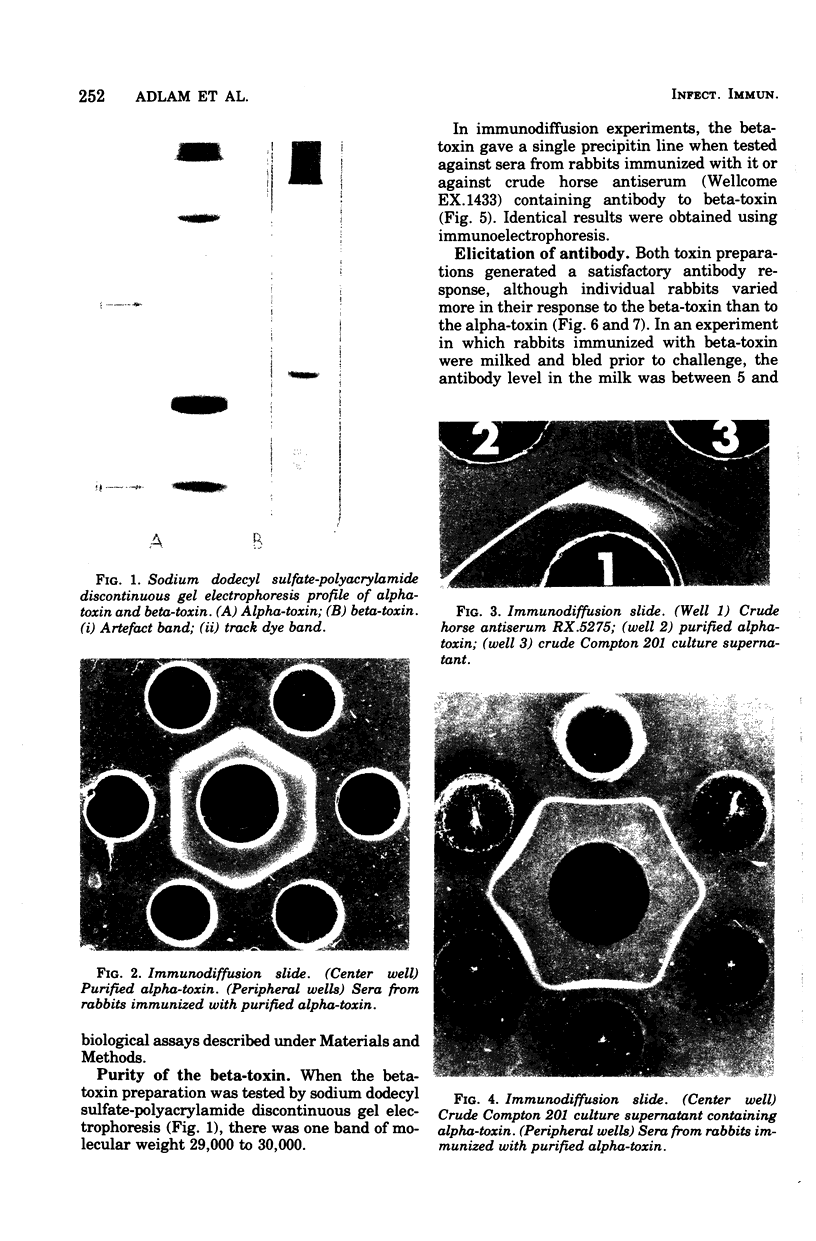
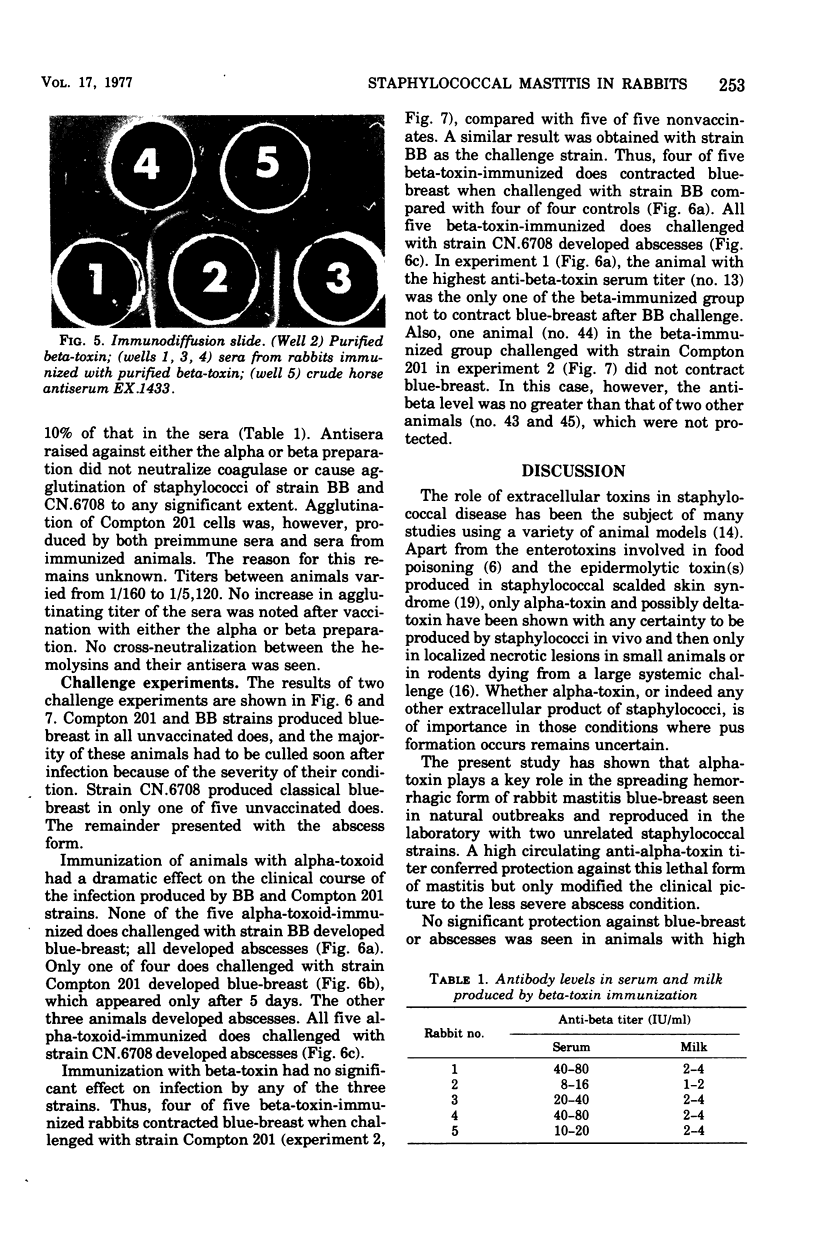
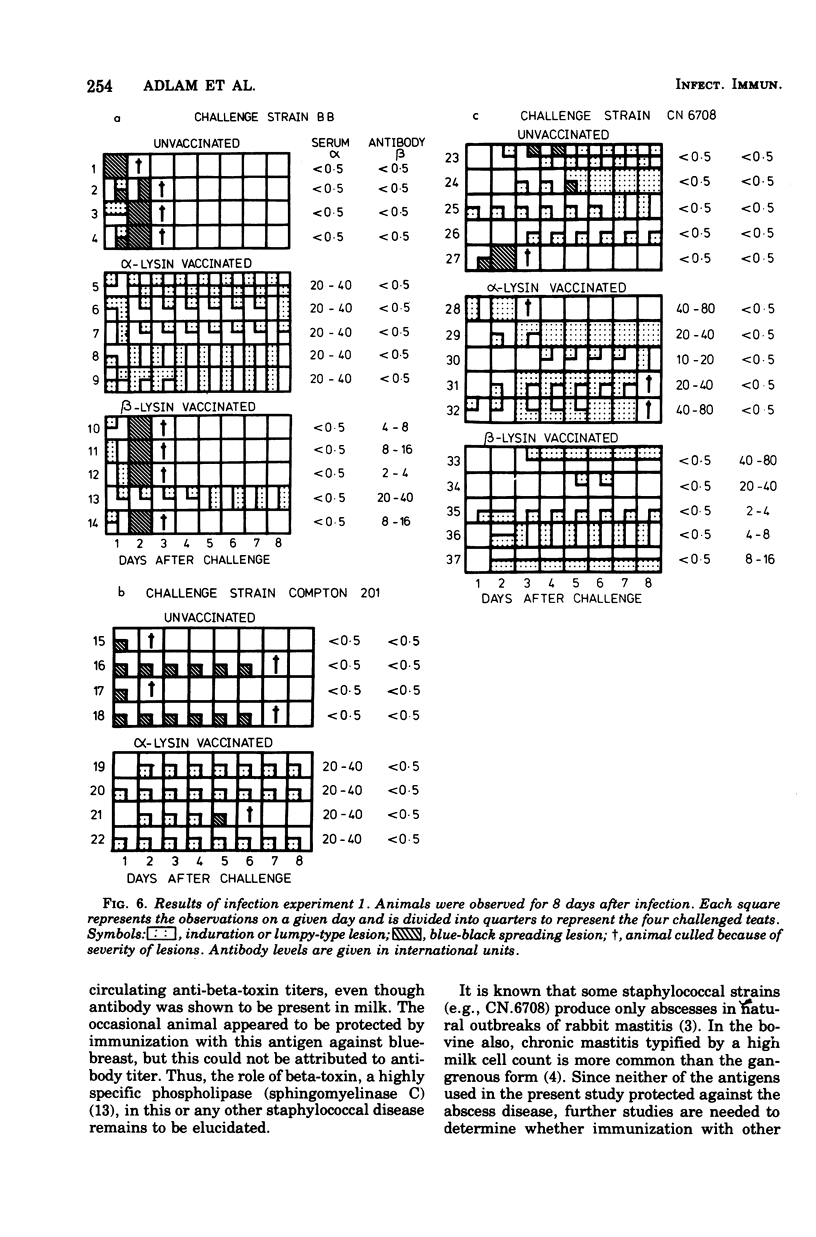
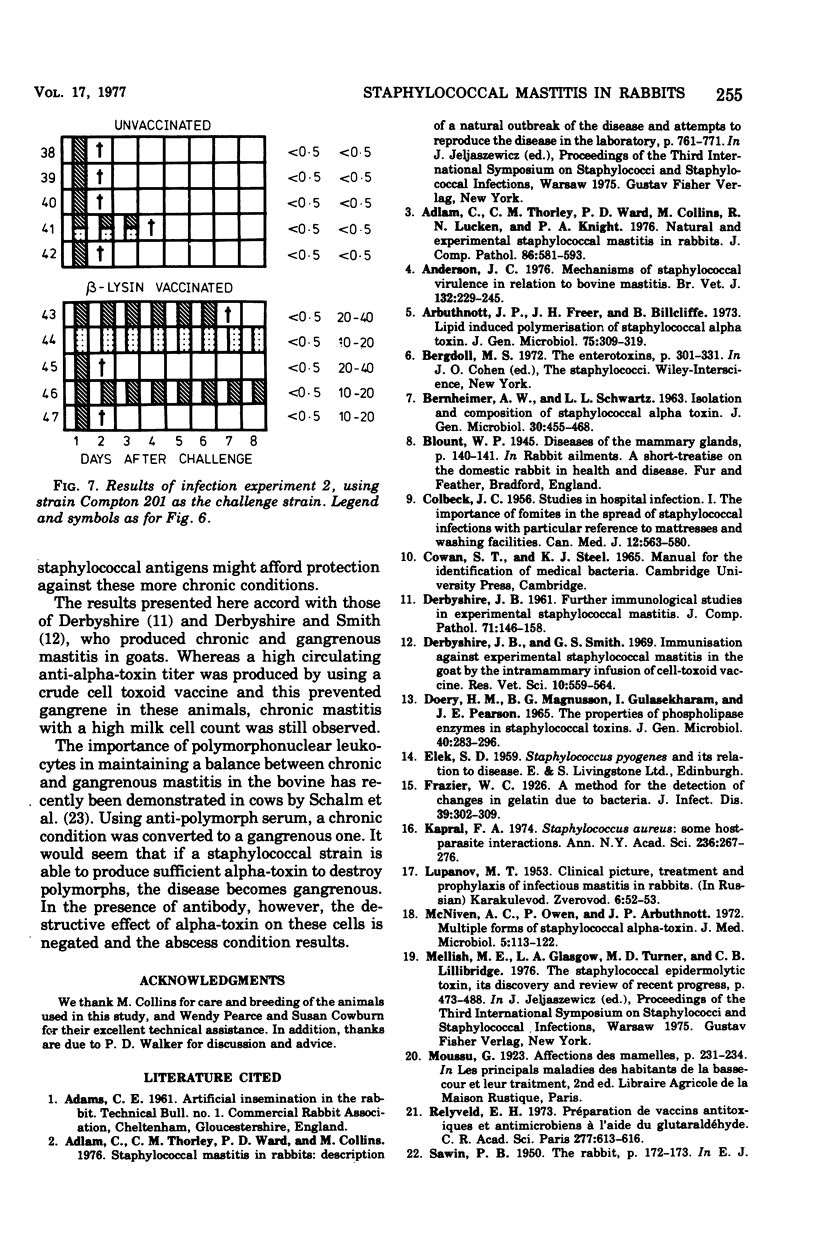
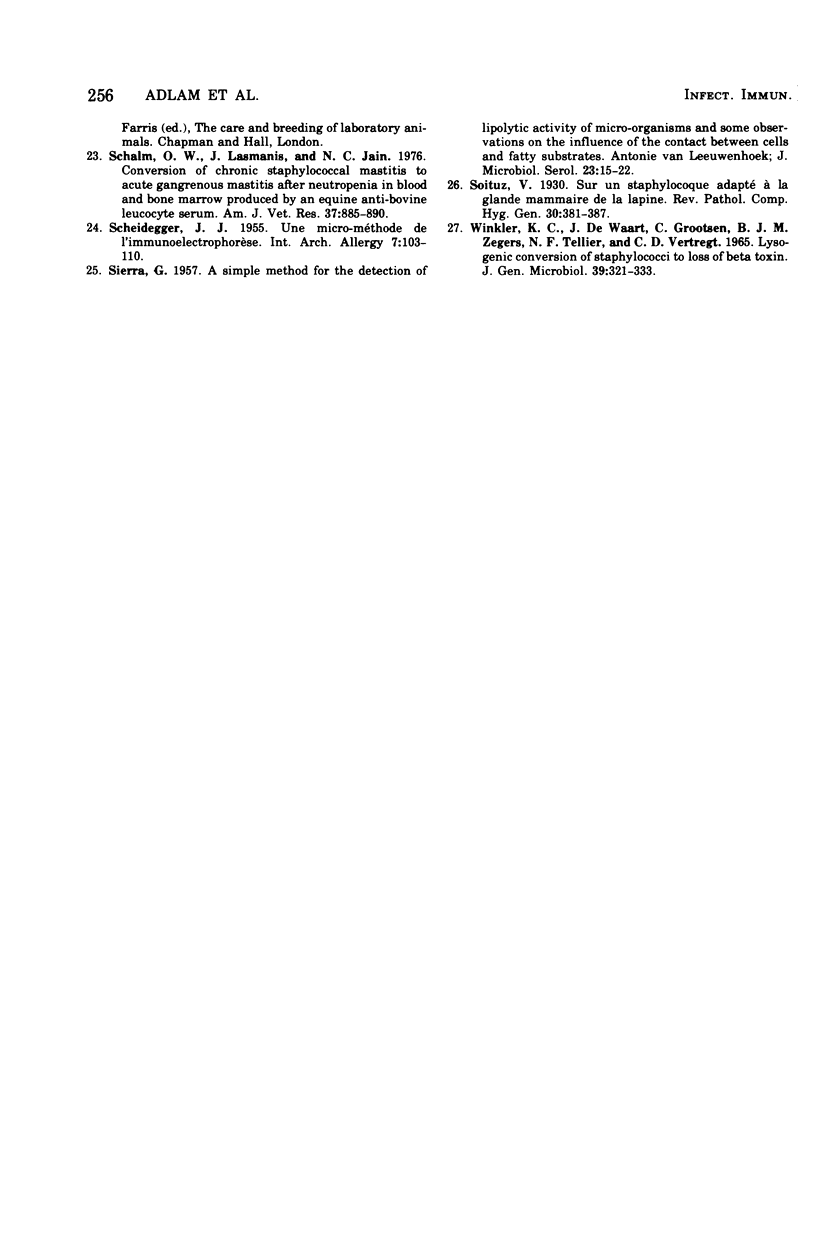
Images in this article
Selected References
These references are in PubMed. This may not be the complete list of references from this article.
- Adlam C., Thorley C. M., Ward P. D., Collins M., Lucken R. N., Knight P. A. Natural and experimental staphylococcal mastitis in rabbits. J Comp Pathol. 1976 Oct;86(4):581–593. doi: 10.1016/0021-9975(76)90067-0. [DOI] [PubMed] [Google Scholar]
- Anderson J. C. Mechanisms of staphylococcal virulence in relation to bovine mastitis. Br Vet J. 1976 May-Jun;132(3):229–245. doi: 10.1016/s0007-1935(17)34682-1. [DOI] [PubMed] [Google Scholar]
- Arbuthnott J. P., Freer J. H., Billcliffe B. Lipid-induced polymerization of staphylococcal -toxin. J Gen Microbiol. 1973 Apr;75(2):309–319. doi: 10.1099/00221287-75-2-309. [DOI] [PubMed] [Google Scholar]
- BERNHEIMER A. W., SCHWARTZ L. L. Isolation and composition of staphylococcal alpha toxin. J Gen Microbiol. 1963 Mar;30:455–468. doi: 10.1099/00221287-30-3-455. [DOI] [PubMed] [Google Scholar]
- COLBECK J. C. Studies in hospital infections. I. Can Serv Med J. 1956 Jul-Aug;12(7):563–580. [PubMed] [Google Scholar]
- DERBYSHIRE J. B. Further immunological studies in experimental staphylococcal mastitis. J Comp Pathol. 1961 Apr;71:146–158. doi: 10.1016/s0368-1742(61)80019-2. [DOI] [PubMed] [Google Scholar]
- Derbyshire J. B., Smith G. S. Immunization against experimental staphylococcal mastitis in the goat by the intramammary infusion of cell-toxoid vaccine. Res Vet Sci. 1969 Nov;10(6):559–564. [PubMed] [Google Scholar]
- Doery H. M., Magnusson B. J., Gulasekharam J., Pearson J. E. The properties of phospholipase enzymes in staphylococcal toxins. J Gen Microbiol. 1965 Aug;40(2):283–296. doi: 10.1099/00221287-40-2-283. [DOI] [PubMed] [Google Scholar]
- Kapral F. A. Staphylococcus aureus: some host-parasite interactions. Ann N Y Acad Sci. 1974 Jul 31;236(0):267–276. doi: 10.1111/j.1749-6632.1974.tb41497.x. [DOI] [PubMed] [Google Scholar]
- McNiven A. C., Owen P., Arbuthnott J. P. Multiple forms of staphylococcal alpha-toxin. J Med Microbiol. 1972 Feb;5(1):113–122. doi: 10.1099/00222615-5-1-113. [DOI] [PubMed] [Google Scholar]
- Relyveld E. H. Préparation de vaccins antitoxiques et antimicrobiens à l'aide du glutaraldéhyde. C R Acad Sci Hebd Seances Acad Sci D. 1973 Aug 6;277(6):613–616. [PubMed] [Google Scholar]
- SCHEIDEGGER J. J. Une micro-méthode de l'immuno-electrophorèse. Int Arch Allergy Appl Immunol. 1955;7(2):103–110. [PubMed] [Google Scholar]
- SIERRA G. A simple method for the detection of lipolytic activity of micro-organisms and some observations on the influence of the contact between cells and fatty substrates. Antonie Van Leeuwenhoek. 1957;23(1):15–22. doi: 10.1007/BF02545855. [DOI] [PubMed] [Google Scholar]
- Schalm O. W., Lasmanis J., Jain N. C. Conversion of chronic staphylococcal mastitis to acute gangrenous mastitis after neutropenia in blood and bone marrow produced by an equine anti-bovine leukocyte serum. Am J Vet Res. 1976 Aug;37(8):885–890. [PubMed] [Google Scholar]
- Winkler K. C., de Waart J., Grootsen C. Lysogenic conversion of staphylococci to loss of beta-toxin. J Gen Microbiol. 1965 Jun;39(3):321–333. doi: 10.1099/00221287-39-3-321. [DOI] [PubMed] [Google Scholar]



